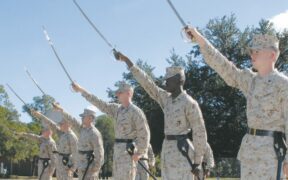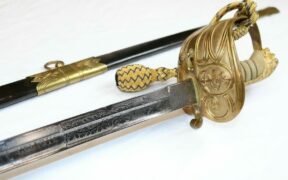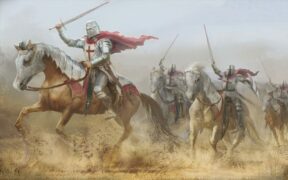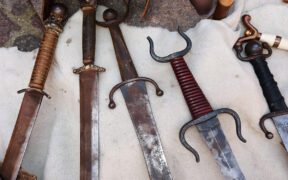Our content features commercial links to our products, committed to transparent, unbiased, and informed editorial recommendations. Learn More
The History of NCO Swords in the US Army
NO AI USED This Article has been written and edited by our team with no help of the AI
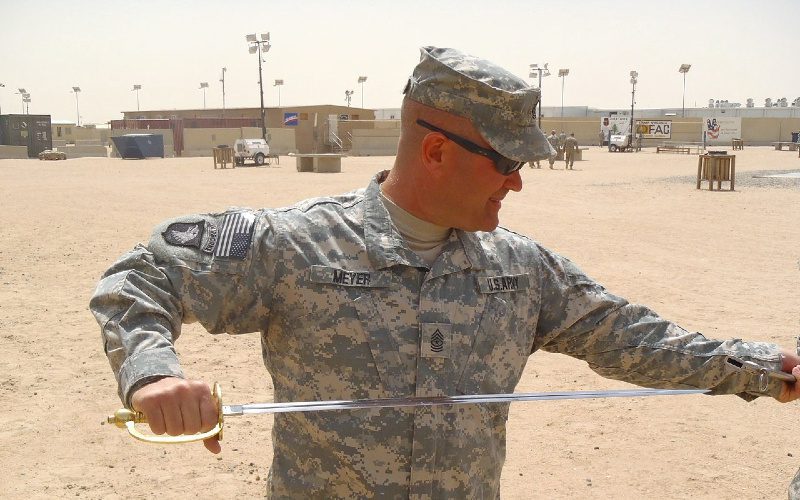
With its rich history dating as far back as the Roman Legionnaires, the role of Noncommissioned Officers (NCOs) played an essential part in the accomplishment of the missions and the welfare of the soldiers. Responsible for the discipline and training of their troops from the earliest days, the US Army has seen the need to distinguish its NCOs from the other soldiers.
This was accomplished through the introduction of the NCO sword in an effort to give the NCOs more prominence. Although no longer issued, the sword serves as a visual reminder of the authority, strength, and integrity of the position it represents.
Let’s explore and learn about the different types of NCO swords, their uses, and characteristics.
Types of NCO swords
There are many variations of the NCO sword as it evolved throughout history – from the length of the sword itself to the curvature of the blade along with the different designs and decorations to emphasize its significance.
| NCO Sword Type | Length | Type of blade | Type of handle |
|---|---|---|---|
| NCO M1790-1810 | 33 inches (84 cm) | Broad curved blade with a single edge | Horn grips |
| MNCO M1800-1810 | 35¼ inches (89.5 cm) | Curved, broad blade with a false edge at the top | Wood carved |
| NCO M1813 | 35¼ inches (89.5 cm) | Straight, single-edged blade | Smooth wood with a ferrule at the end of the blade |
| MNCO M1813-1818NC | 35½ inches (90 cm) | Straight blade with a deep and narrow fuller that ends at the beginning of the false edge | Wood carved with parallel grooves and ridges |
| NCO M1818 | 31 inches (79 cm) | Single-edged straight blade with only a rudimentary false edge | Carved out of wood and covered with ribbed leather |
| NCO M1840 | 37½ inches (90.2 cm) | Long and heavy straight blade with a false edge | The grip is ribbed to imitate wire wrapping and ends with a globular pommel |
| MNCO M1850-1870 | 31 inches (79 cm) | Elliptical. Some blades are etched, others are single-edged or plain | The barrel-shaped and reeded grips are made out of bones |
NCO Sword, Model 1790-1810

The swords of noncommissioned officers in the years immediately following the American Revolution were not strictly established. However, there are references to them in the General Orders of March 30 and September 22, 1800.
The pattern in use at the time was a cutting sword with a brass-mounted hilt and a blade approximately 30 inches (72 cm) long and at least an inch (2.5 cm) wide at the hilt. The blade itself was broad and curved, featuring a single edge.
At the bottom, the sword had a six-sided, outward flaring horn grip that tapered towards the pommel before flattening into a slightly concave swing. The grip was accompanied by a brass knuckle bow, designed to protect the wielder’s hand when striking or defending.
Militia NCO Sword, Model 1800-1810
The militia consists of the able-bodied civilian population that aids the regular army in an emergency. Although the regulations of 1801 continued the same general pattern of swords for NCOs, this sword was specifically designed with iron mountings and plain features to indicate it was the sword of an enlisted man. Because there are no indications of government ownership, it has been classified as a militia sword.
Bearing a close resemblance to the noncommissioned officers’ sword with its curved blade and single-edged design, it is worth noting that this sword is two inches longer in length. Its grip is wood carved and extends into a flat pommel. Similar to the government-issued NCO sword, a knuckle bow curves around the grip, acting as a shield for the officer’s hand.
NCO Sword, Model 1813

On 11th January 1813, the Commissary General contracted Nathan Starr, the nation’s first sword manufacturer to supply 2,000 noncommissioned officers’ swords. From June 1813 to March 1815, these swords were manufactured and supplied in small quantities and were commonly seen during the War of 1812.
Unlike its curved predecessor, this sword had a single edged straight blade and was shorter in length, measuring 26 inches (66 cm). The swords bore a stamp on the ricasso – “N. STARR”, the manufacturer’s signature, as well as another stamp on the other side, bearing the initials of the inspector they’ve been approved by.
The model 1813 wasn’t the only saber manufactured by Nathan Starr during this period as the War of 1812 also included the use of other military swords such as the 1813 cavalry saber and the 1812 cutlass.
Militia NCO Sword, Model 1813-1818
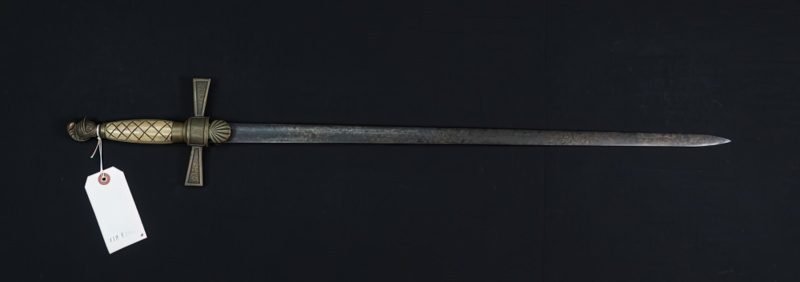
The United States military was ill-prepared when it engaged in its second war with Great Britain in 1812. Thus, the US did what it had previously done during the American Revolution and turned towards the militia for aid.
This saber was a mix between Nathan Starr’s model 1813 and the one he would later manufacture in 1818. It bore resemblances of both swords – the blade featured the same design as the former, whereas the hilt was similar to the latter. Its plain design, lack of markings, and absence of even the inspector’s initials suggest it was for militia use.
NCO Sword, Model 1818

The aforementioned model 1818, also referred to as an artillery sword, was a result of the contract Nathan Starr signed in 1818 with the Colonel of Ordnance, Decius Wadsworth.
It followed the same general pattern as the previous model, although this one was 4 inches shorter, measuring 31 inches (79 cm) overall. Its wooden grip is also covered with ribbed leather in order to provide a better holding surface.
NCO Sword, Model 1840

The model 1840 NCO sword was based on a German variant of the infantry sword that was used by British forces during the Napoleonic Wars. Featuring a 31-inch (79 cm) blade, a cast brass hilt that imitated the costlier wire-wrapped leather handles, and a leather scabbard, this sword has been in use until 1868 when the ordnance board recommended it being replaced with a steel one.
The M1840 is probably the most famous sword in this list due to its extensive service life of over 70 years, a period which included the Mexican-American War, the Civil War, and the Spanish-American War.
One of the sword’s most noteworthy wielders was Sergeant Major Edward Baker who was assigned to the 10th US Cavalry during the Spanish-American War. He even received the Medal of Honor for his heroism when he left the cover of safety under heavy fire to rescue a wounded soldier from drowning.
Militia NCO Sword, Model 1850-1870

There’s quite a bit of variance in the militia NCO models in the middle of the nineteenth century. Some of the more notable deviations are encountered in the blade itself, meaning some were etched while others were single-edged and plain.
The most common design was the straight, single-edged blade adorned with a stylized helmet at the pommel. They measured 31 inches (79 cm) overall and similar to the NCO M1840, they were used during the Civil War.
General characteristics of the NCO Sword
The most significant characteristic of the United States Army NCO sword that distinguished it from regular infantry swords was the material used to create the mount. While infantry swords featured an iron mount, the NCO sword has a brass mount to signify its prestige as brass was considered to be a rare material after the American Revolution.
Blade
The blade of the noncommissioned officer’s sword is made of steel. Throughout the years, we can see that design has changed from a curved blade to the much preferred straight blade.
Much like its European counterpart, the varying blade length throughout its evolution isn’t drastic and follows the general pattern of 26-31 inches (66-79 cm).
Knuckle Bow and Hand Guard
The knuckle bow followed the standard stirrup pattern with chamfered edges. It usually crossed with the quillon that extended on the other side to form a slightly flared hand guard.
Depending on the rank of the soldier who carried the sword, the materials used were either solid brass or iron.
Handle
The very first model of the NCO sword saw the implementation of horns as a handle. However, this design was quickly abandoned and substituted for the traditional wood-carved handle. Leather wrappings were also added to the latter models in order to provide a stronger grip for the soldier’s hand.
Scabbard
Unlike the designs of the scabbards for the French sabers, the scabbards for the NCO swords weren’t as extravagant. The earliest models usually had leather or iron scabbards, usually japanned black until 1868, when they were replaced by steel scabbards.
Pommel
From the six-sided pommel to the bird’s head and the stylized helmet, we can observe the introduction of many designs to the pommel of the NCO sword throughout the years.
However, the one that stands out the most and is more commonly remembered throughout history, belongs to the M1840. The simplicity of its globular shape and capstan rivet provides a graceful and handsome appearance.
Overall length and Width
Depending on the division they were used in, the length of the swords varied, but this distinction wasn’t too great – ranging between 31 and 37 inches (79 -94 cm). On the other hand, the width generally stayed the same around 1¼ inches (3 cm).
Historic use
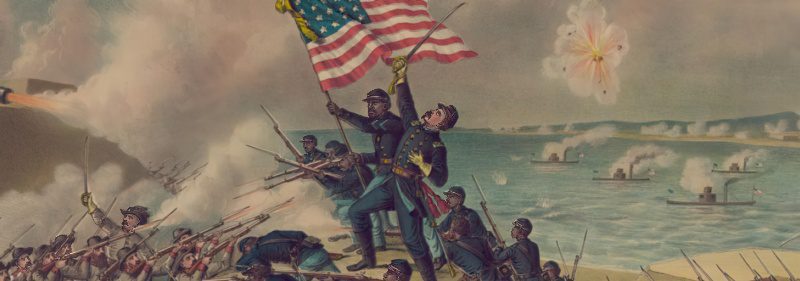
In the period spanning from the War of 1812 to the Spanish-American War, the US Army NCO sword has had a continuous use in battle. Although originally intended as a prestigious token of the army’s NCOs, this weapon has been adopted by multiple divisions.
- Officers
- Infantry
- Artillery
- Marine Corps
- Musicians
With the introduction of the musket, many believed that the noncommissioned officers’ sword would be made redundant. However, the musket’s issue of only being able to fire once and long reload time left the soldiers with nothing but their swords to defend themselves against a charging army. With a service life of more than 70 years, it was eventually replaced by the bayonet.
Modern use
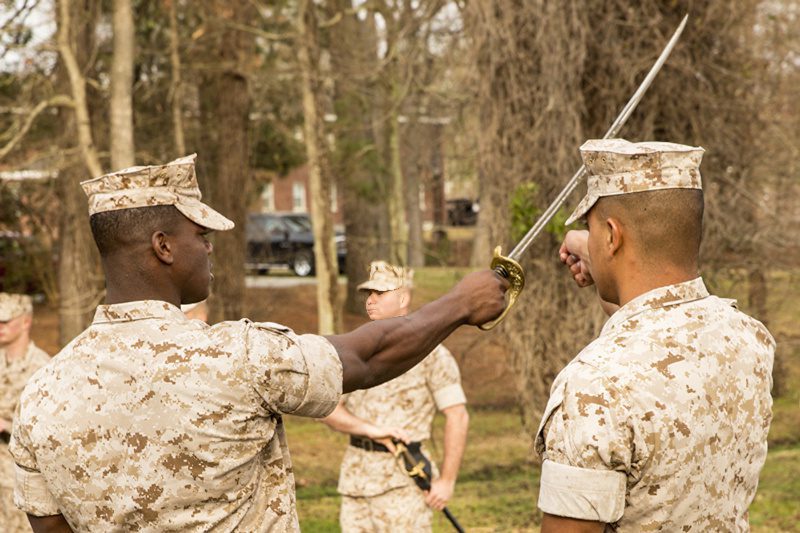
Although no longer a standard battle-issued weapon in modern times, the NCO sword has been granted several new responsibilities, including training, management, and leadership. Once worn with bravery and dignity as required in battle, it is no longer worn by the NCOs today.
Nonetheless, it is still regarded in high esteem and used symbolically during the NCO Change of Duty as a ceremonial sword to mark the transfer of responsibility from one army officer to another.
Conclusion
With a service life of more than 70 years and its modern-day ceremonial use, the NCO sword is the oldest weapon still used by the United States military. Today, it continues to uphold the strength, prominence, and authority it was designed for.
